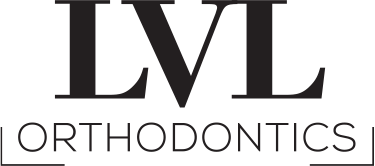How Your Orthodontist Fixes Malocclusions
If you have spent any time at the orthodontist, you may or may not have heard the term malocclusion — a clinical term meaning misaligned teeth. These misalignments have names you may be familiar with including overbite, underbite, crossbite, and overcrowding. No matter the name, having a malocclusion could potentially cause oral health issues that in time can affect your overall well-being as well.
The good news? Orthodontic technology has come a long way in correcting these different types of malocclusions and creating healthier smiles as a result. In addition to creating a more aesthetic smile, orthodontia allows us to fix malocclusions which could cause oral health issues such as chewing, biting, and even speaking.
What Causes Malocclusions?
Misaligned teeth and bite problems can be caused by a variety of circumstances. These include:
- Genetics
- Injury
- Facial Development
- Certain habits, such as thumb sucking and bottle feeding
It is recommended that children begin seeing an orthodontist as early as age seven in order to identify bite problems and start treatment early on.
Fixing Malocclusions
Different orthodontic treatments like braces, Invisalign, retainers, and even surgery are used to fix bite problems. While each case and bite problem is different, orthodontic treatments aim to readjust teeth into a more comfortable, healthy, and aesthetic smile. Treatments exist for the following conditions:
Crossbite
When one or multiple upper teeth fit inside of the lower teeth, it is called a crossbite. This malocclusion tends to worsen as time passes and can affect biting and chewing. Invisalign, braces, aligners, and elastics can be used to readjust a crossbite. In some extreme cases, jaw realignment surgery may be necessary.
Overbite
An overbite is when your upper front teeth overlap your lower front teeth. This can affect your gum tissue and cause tooth decay, jaw pain, headaches, and changes in appearance. Depending on the severity of an overbite, they can be fixed with the help of braces, Invisalign, and surgery.
Underbite
When the lower jaw lands out in front of the upper jaw, it is called an underbite. While more difficult to treat, if left untreated this malocclusion can cause a myriad of jaw problems, TMJ disorders, and severe headaches. Braces are one solution for an underbite, however as it is a more difficult bite issue, braces will need to be worn for a longer period of time. Jaw surgery is another option that will provide some underbite relief.
Overcrowding
Crowding is one of the most common bite issues and occurs when teeth do not have enough space to come into your mouth. A crowded mouth makes your teeth more difficult to properly clean, leading to more cavities and an increased chance of gum disease. Crowded teeth are commonly fixed with the help of braces and Invisalign.
Spacing
Spacing, as the name suggests, is the opposite of overcrowding. However, like overcrowding, it can also cause an influx in cavities and gum issues due to increased room for food and bacteria to build up between the teeth. Many spacing issues can be solved with braces, aligners, and Invisalign.
Helping You Achieve a Straighter Smile
Whatever your bite issues may be, your orthodontist is here to help create a custom plan to get you the results you need.
If you are suffering from bite issues and are looking for a skilled Orthodontist in Dallas, Texas, look no further than LVL Orthodontics! Our team will help find the right solution for your oral health and get you on the way to a healthier smile. For those who may live outside the Dallas Metro, consider learning more about our virtual screenings. Contact our team today to book an appointment!


